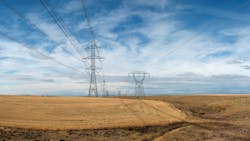Draft DOE Study Identifies Pressing National Electric Transmission Needs
The U.S. Department of Energy’s (DOE) Grid Deployment Office (GDO) has released a draft of the National Transmission Needs Study for public comment and feedback. Updated by President Biden’s Bipartisan Infrastructure Law (BIL, Section 40105), the Needs Study provides information about present and anticipated future capacity constraints and congestion on the nation’s electric transmission grid and serves as DOE’s triennial state of the grid report. Findings of the Needs Study will provide public insight into areas of the power grid that would benefit from increased transmission capacity.
“The power grid is the backbone of the nation’s electricity system and America’s energy needs have substantially shifted in order to support a modern economy,” said GDO Director Maria Robinson. “Today’s grid faces many challenges, including rising costs for American homes and businesses, widespread integration of new clean energy sources and growing transportation and building electrification, and remaining resilient in the face of extreme weather exacerbated by climate change. The Needs Study will help identify how and where the reliability and resilience of the grid can be improved, while also ensuring DOE deploys investments to effectively provide clean, affordable, and reliable electricity to everyone, everywhere and when they need it most.”
In October 2022, an initial draft of the Needs Study was released to states, tribes, and regional grid entities to ensure regional, interregional, and national perspectives are taken into consideration. DOE received nearly 180 comments from 20 different entities and that feedback has been incorporated into the second draft released today.
Key findings of the draft needs study include the following:
- There is a pressing need for additional electric transmission infrastructure. Nearly all regions in the United States will benefit from improved reliability and resilience given additional investments. Regions with high electricity costs—notably the Plains, Midwest, Mid-Atlantic, New York, and California—will also benefit from transmission that delivers cost-effective generation.
- Increasing interregional transmission results in the largest benefits. Historically, the largest benefit in new interregional transfer capacity additions is across the interconnection seams – between the Mountain and Plains regions and between Texas and all its neighbors (Southwest, Plains, and Delta regions). Large interregional transmission benefit is also found between the Plains and its two eastern neighbors, the Midwest and Delta regions.
- Needs will shift over time. The clean energy transformation, evolving regional demand, and increasingly extreme weather events must all be accommodated by the future power grid. Significant transmission deployment is needed as soon as 2030 in the Plains, Midwest, and Texas regions. By 2040, large deployments will also be needed in the Mountain, Mid-Atlantic, and Southeast regions. The same is true for interregional transmission deployment; By 2040 there is a significant need for new interregional transmission between nearly all regions.
DOE is requesting feedback on the Draft National Transmission Needs Study, specifically on the analysis used, conclusions, or any other comments or suggestions for improving the study.
Draft Study Enhances DOE Transmission Planning Efforts
DOE launched the Needs Study in January 2022 as part of the Building a Better Grid Initiative, which aims to catalyze nationwide development of new and upgraded high-capacity transmission lines and support investments to modernize the flexibility of the distribution system to create a more resilient electric grid. The Bipartisan Infrastructure Law expanded a previous DOE state of the grid report, called the National Transmission Congestion Study, to consider both historic and anticipated future capacity constraints and congestion that could adversely affect consumers. The Needs Study contains no new modeling and is an assessment of existing data and the results from power sector reports published by a wide variety of sources in the last several years.
Importantly, the Needs Study is not a long-term planning study. The draft findings do not identify any particular transmission solution for the identified needs. While the Needs Study is an input to the potential designation by DOE of National Interest Electric Transmission Corridors (NIETCs) under section 216 of the Federal Power Act, the draft Needs Study released today does not designate or identify any specific NIETCs. Any such designation will occur in a future separate process.
The Needs Study is one of two transmission studies that GDO will release in 2023. The second is the National Transmission Planning (NTP) Study; a national-scale, long-term (a 15- to 30-year) transmission planning analysis will identify a portfolio of potential transmission solutions that will enable a national transition to clean energy production and delivery. The NTP Study will inform existing regional transmission planning processes and pinpoint strategies to accelerate decarbonization while maintaining system reliability. This analysis will be scenario-based to provide visibility and needs for multiple future outcomes. GDO intends to release the NTP Study in Winter 2023.
